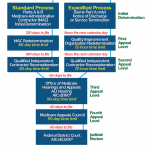
iQoncept/shutterstock.com
In its 2016 Work Plan, the HHS Office of Inspector General (OIG) outlined its plans for audits and evaluations of covered entities to work on creating a permanent and more structured audit program. In light of their focused effort, the Office for Civil Rights has indicated that they will concentrate on areas of high risk and non-compliance in the day-to-day practice of coding and billing.
As practices move forward in 2016, it is imperative to identify any areas of risk for non-compliance and where improvements should be made to correct any findings. Most practices will find that the highest area for risk lies in the billing area for services performed in the practice. It is not uncommon to bill incorrectly for a service, but the OIG usually makes the determination on whether a mistake is due to fraud or abuse, because incorrect billing can lead to significant overpayments. The key to avoiding and correcting any risk in billing is for a practice to conduct a series of audits on sampling of charts at least twice a year to monitor compliance. Reviewing billing and documentation requirements and applying them to services billed can help to identify and correct any problematic areas.
Implementing a self-audit program in the practice provides a great benefit to help with streamlining the day-to-day business operations. A practice’s self-audit program can be used to determine if:
- Bills are coded correctly and reflect the services provided that are documented in the medical records;
- Documentation is completed correctly; and
- Services provided are reasonable and necessary.
An ongoing evaluation of medical records will assist with taking a closer look at the standards and procedures for coding and billing, as well as review of claims submission. The standards and procedures for coding and billing in a practice should reflect the regulations as outlined in the procedural and diagnostic manuals in addition to all insurer policies and procedures.
It is recommended that practices start with a baseline audit; this will examine the claim development and submission process from the patient visit all the way through the claim submission and reimbursement. Taking a deep dive from the front end to the back end will help with identifying any element within the process that may contribute to non-compliance and may serve as a basis for future audits on specific areas in the practice. Although there are various ways to conduct a baseline audit, most auditors recommend that practices review high-dollar claims, high-volume procedures as well as key payers so as to give physicians a benchmark to measure on compliance and effectiveness. This should be done by randomly selecting five or more charts per payer. Audit results should be shared with the physician(s) as well as the billing and coding staff and incorporate any training and educational update as necessary.


